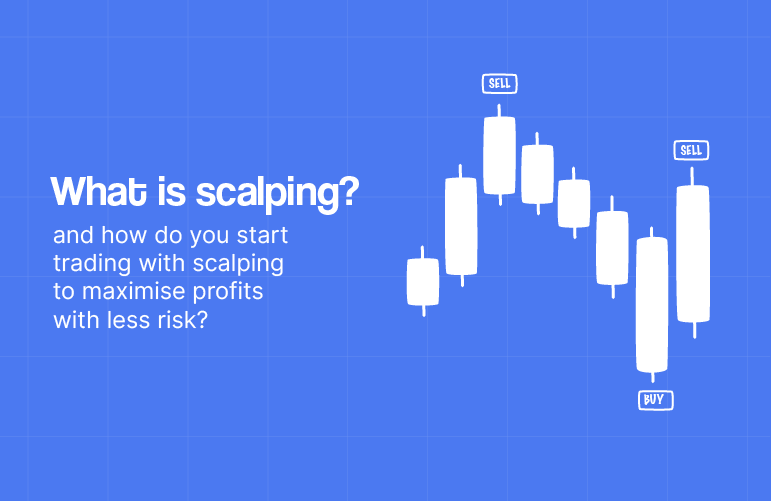Scalp trading in crypto futures is an intricate dance of timing, strategy, and discipline. While it offers the potential for quick and frequent profits, it demands a meticulous approach and a deep understanding of market dynamics. In this guide, we will demystify the concept of scalping, exploring what it entails and providing insights on how you can kickstart your journey towards lucrative trading in crypto future.
What is Scalping in Crypto Futures?
Scalping is a trading strategy characterised by making numerous small and rapid trades to capitalise on minor price movements. Traders, known as scalpers, aim to “scalp” small profits consistently throughout the day, taking advantage of market inefficiencies and price fluctuations.
In the context of crypto futures, scalping involves opening and closing positions in a short time frame, often within minutes or even seconds.
Key Elements of Scalping
1. Time Frame:
Unlike long-term strategies, scalping operates on extremely short time frames. Crypto futures scalpers typically focus on the one-minute or five-minute charts to identify quick entry and exit points.
2. Technical Analysis:
Scalping heavily relies on technical analysis, as traders need to identify patterns, trends, and support/resistance levels swiftly. Analytical tools, charts, and indicators become essential in making split-second decisions. Some technical indictaors one can use for scalp trading crypto are –
Moving Averages
Moving averages help identify trends and smooth out price data. Short-term averages like the 5-minute or 15-minute MA are particularly useful for scalping.
RSI (Relative Strength Index)
The RSI helps determine overbought or oversold conditions. Traders use it to spot potential reversal points.
MACD (Moving Average Convergence Divergence)
MACD is a momentum indicator that shows changes in the strength, direction, and duration of a trend, helping scalpers make quick decisions.
The Role of Leverage in Crypto Scalping
- Leverage trading can amplify profits in crypto scalping, as small price movements can yield significant returns when leverage is used.
- However, it also increases risk. Misusing leverage can lead to larger losses due to the fast pace of scalping trades.
- Traders should use low leverage and ensure risk management is in place to protect capital.
4. Risk Management in Crypto Futures Scalping:
Given the high frequency of trades, effective risk management is crucial in scalping. Some risk management strategies are –
Importance of Stop-Loss Orders
Setting tight stop-loss orders is crucial in scalping to limit potential losses, given the quick pace of trades.
Position Sizing
Proper position sizing ensures that each trade has a controlled risk. Avoid risking too much on a single trade.
Managing Emotions and Staying Disciplined
Scalp trading demands a disciplined approach. Emotional trading can lead to losses, so it’s essential to stick to a well-planned strategy.
Pros & Cons of Scalp Trading
| Pros | Cons |
|---|---|
| Potential for frequent profits | Requires high focus and attention |
| Leverage small price movements effectively | High risk due to quick decisions |
| Can be done in volatile markets | May lead to higher transaction costs |
Start your Scalping Journey in Crypto Futures on Pi42
1. Develop a Scalping Strategy:
Create a clear and well-defined scalping strategy tailored to your risk tolerance and trading style. This should include criteria for entering and exiting trades, risk management rules, and guidelines for adapting to changing market conditions.
2. Start Small:
Initiate your scalping journey with small amounts to minimise risk while gaining practical experience. As you become more comfortable and confident in your strategy, you can gradually increase your position sizes.
3. Stay Informed:
Cryptocurrency markets are highly influenced by news and events. Stay informed about market developments, regulatory changes, and industry news that could impact your trades.
4. Constantly Evaluate and Adjust:
Scalping requires constant adaptation to market conditions. Regularly evaluate the performance of your strategy, identify areas for improvement, and be willing to adjust your approach based on evolving market dynamics.
Conclusion
In the fast-paced world of crypto futures trading, where opportunities arise and fade in the blink of an eye, mastering the art of scalping can be your ticket to maximising profits with less risk. By educating yourself, and developing a sound strategy, you can unlock the door to a world where profits come in swift, controlled bursts, minimising risk and maximising your potential gains. Embrace the art of scalping, and let the crypto futures market become your canvas for financial success.
Frequently Asked Questions
1. Is crypto scalping profitable?
Yes, crypto scalping can be profitable if done correctly, with a well-defined strategy and effective risk management.
2. Which crypto is best for scalping?
Highly liquid and volatile cryptocurrencies like Bitcoin and Ethereum are ideal for scalping crypto.
3. What is the best time for scalping crypto?
The best time for scalping crypto is during times of high volatility, typically during market open hours or major news events.
4. Which is more profitable – Scalping or Day Trading?
Scalping can be more profitable in terms of frequent, small profits, but day trading may offer larger individual profits. Both strategies have different risk/reward profiles.

